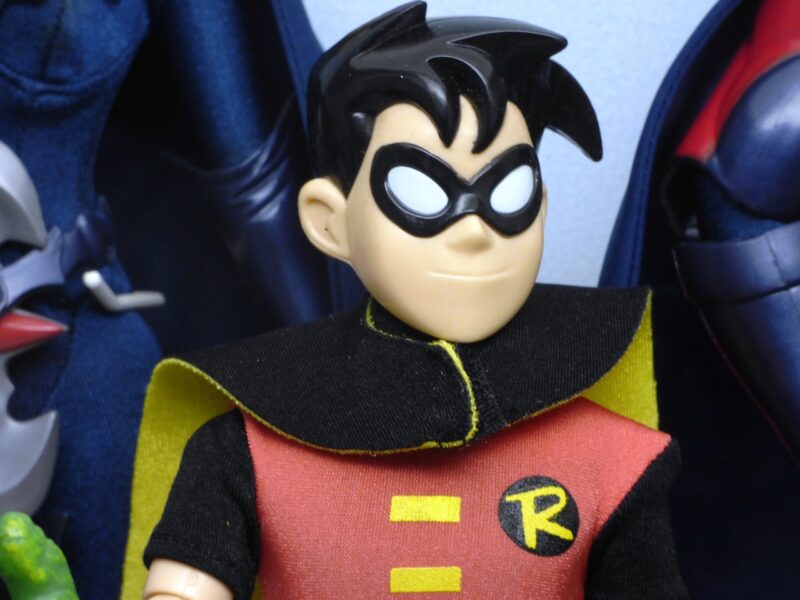The Impact of Batman’s Tragic Origin Story on His Heroic Journey
November 14, 2024

Batman, also known as Bruce Wayne, is one of the most iconic superheroes in modern pop culture. What sets Batman apart from other superheroes is not his superhuman abilities but his deeply human story, rooted in tragedy and trauma. This article explores how Batman’s tragic origin story has profoundly influenced his heroic journey, character development, and the broader narrative of justice within the DC Universe.
1. The Roots of Batman’s Origin Story
Bruce Wayne’s journey began on a fateful night in Gotham City when he witnessed the brutal murder of his parents, Thomas and Martha Wayne. This formative event, committed by a mugger in a dark alley, serves as the catalyst for Bruce’s transformation from a grieving child into the Dark Knight.
The moment Bruce witnessed the violence and helplessness of his parents marked a turning point that shaped his worldview, instilling in him a belief that the world was inherently dangerous and corrupt. This traumatic experience laid the foundation for Bruce’s quest for justice, as he vowed to never allow such tragedy to happen again, not only to himself but to the citizens of Gotham as well.
2. The Psychological Impact of Trauma
The psychological effects of trauma are evident in Bruce’s character. Despite being a billionaire with access to resources, his childhood trauma leads him to adopt a dual identity. By becoming Batman, Bruce attempts to control the chaos he experienced as a child. The complexities of his psyche are mirrored in his need to wear a mask, both literally and figuratively.
Bruce’s trauma manifests in a relentless drive to fight crime, coupled with an internal struggle between his desire for vengeance and his commitment to justice. This conflict often makes him question his methods and moral choices, leading to rich character development as he wrestles with darkness within himself.
3. Batman and the Archetype of the Tragic Hero
Batman embodies the archetype of the tragic hero—someone who possesses extraordinary qualities yet is doomed to suffer because of their past. The very essence of Batman’s character lies in his tragedy; it propels him into a life of heroism but also binds him to a relentless cycle of pain and confrontation.
In literary terms, Batman fits the mold of the tragic hero in that his strength and purpose arise from his vulnerabilities. Every time he dons the cape and cowl, he confronts the shadows of his past, which fuels his commitment to protect Gotham City. This interplay between heroism and tragedy makes Batman a complex figure, bridging the gap between ordinary humanity and extraordinary resolve.
4. The Influence of Batman’s Origin on His Relationships
Batman’s origin story significantly impacts his relationships with other characters within the DC Universe. His trust issues, fear of intimacy, and dedication to his mission often create barriers between him and those he cares for, including allies like Robin, Batgirl, and his love interests such as Catwoman and Talia al Ghul.
For instance, his relationship with Robin, specifically Dick Grayson, showcases this dynamic beautifully. Bruce’s protective nature stems from his traumatic past, leading him to be an overly controlling mentor, fearing the same tragedy may befall his protégé. This tension provides vital narrative threads and emotional depth, highlighting how Batman’s experiences permeate throughout not only his life but also the lives of those around him.
5. Batman’s Quest for Justice
Central to Batman’s character is his unwavering commitment to justice, shaped by his past. Fueled by a vigilante spirit and a profound sense of responsibility, he operates under a strict moral code that prohibits him from killing. His principles often lead to complicated confrontations with villains who shine a light on his internal dilemmas, forcing him to confront not just physical threats but also ethical questions surrounding justice and retribution.
The Joker, Batman’s arch-nemesis, serves as a critical foil to Batman’s character. The Joker embodies chaos and nihilism—a stark contrast to Batman’s structured sense of justice. Their push and pull reflects Batman’s ongoing struggle with his own traumatic past while highlighting the delicate balance between order and chaos within the world he inhabits.
6. Legacy of Pain and Hope
Ultimately, Batman’s tragic origin story creates a rich narrative of pain, loss, and redemption. Bruce Wayne’s transformation into Batman represents not just a quest for vengeance, but a tireless fight against the conditions that cause suffering. Through his relentless pursuits, he becomes a symbol of hope for the citizens of Gotham, demonstrating that one can rise from despair and channel personal tragedy into a force for good.
This exploration of trauma finds resonance in a wide audience, providing a blueprint for confronting personal pain and societal injustice. Batman’s legacy transcends his role as a superhero; it fundamentally connects him with humanity, amplifying the emotional stakes in his journey and reinforcing the idea that hope can arise from even the darkest of origins.
Conclusion
Batman’s tragic origin story is more than just a backdrop for his heroism; it actively shapes his character, relationships, and mission. Through his pain and suffering, Bruce Wayne evolves into a complex figure who continually grapples with his past while seeking justice for the present. His story resonates because it mirrors the struggles many face, making Batman not just a hero but a symbol of resilience, reminding us that while tragedy can devastate, it can also empower us to fight for a better world.








